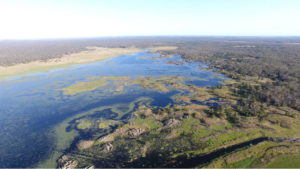Discovery of the Lost Continent of Argoland
During the dinosaur era, Earth was home to supercontinents—massive landmasses comprising at least 75% of the Earth’s land. Pangea, Gondwana, and Pannotia are the most recognized recent supercontinents. Earlier supercontinents included Nuna (Columbia), Rodinia, and Ur.
Argoland: The Vanished Supercontinent
- Argoland was a colossal continent that existed alongside northeastern Australia 155 million years ago.
- This landmass, stretching 3,000 miles long, has been a long-standing geological mystery.
Evidence of Existence
- Scientists deduced the existence of Argoland from the Argo Abyssal Plain, a vast basin beneath the ocean.
- Remnants of Argoland are believed to be buried under parts of Southwest Asia, including Indonesia and Myanmar.
Solving the Mystery
- Using paleomagnetic observations, researchers have traced the fragmentation of Argoland.
- The continent began breaking apart around 300 million years ago, during Gondwana’s era.
Research Findings
- The study identifies fragments of Argoland in regions like Southwest Borneo and West Burma.
- Unlike other continents that split into two, Argoland shattered into numerous pieces, making its historical path complex.
Implications of the Discovery
- The findings challenge the notion that continents can disappear without a trace.
- This research enables more accurate reconstructions of Earth’s geological past, illustrating the dynamic changes of continental structures.
Month: Current Affairs - November, 2023
Category: Science & Technology Current Affairs








